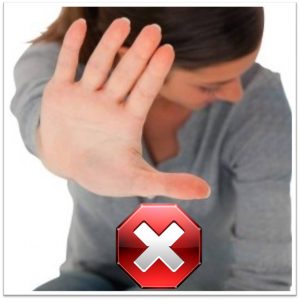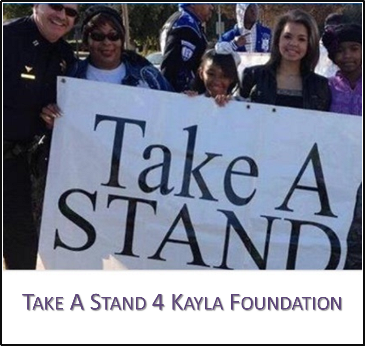 Seeing an image of a violent adult, it’s hard to imagine the innocent baby they once were. Is there such thing as being born violent? Are there really “bad seeds” when it comes to a human life? Like so many qualities, violence involves a real interaction between geneticsand environment. We may not be able to alter the DNA we are born with, but we can strongly influence how these genes are expressed. With all the factors proven to contribute to violence risk, we can no longer say that violent individuals are just “born that way.” There is a lot we can do to prevent violence, and hardly anyone at any age is hopeless or beyond help.
Seeing an image of a violent adult, it’s hard to imagine the innocent baby they once were. Is there such thing as being born violent? Are there really “bad seeds” when it comes to a human life? Like so many qualities, violence involves a real interaction between geneticsand environment. We may not be able to alter the DNA we are born with, but we can strongly influence how these genes are expressed. With all the factors proven to contribute to violence risk, we can no longer say that violent individuals are just “born that way.” There is a lot we can do to prevent violence, and hardly anyone at any age is hopeless or beyond help.
Violence is the result of a combination of biological, social, and psychological factors, especially those that increase exposure to vulnerability, shame, and humiliation. Preventing violence must involve the opposite: making sure people feel safe, cared about, and connected, while ensuring they have a healthy and realistic sense of self-esteem and self-worth.
On October 15, I will be hosting a CE Webinar with violence expert Dr. James Gilligan on understanding and preventing violence. As this presentation will highlight, many environmental factors can contribute to violence. These include adverse childhood events such as abuse, neglect, trauma, loss, and abandonment. Victims of poverty, children who are missing basic necessities and who struggle with poor healthcare or nutrition, are more likely to encounter or engage in violence.
A mother I knew raised twin boys, who lost their father at a young age. Working two jobs to scrape by to support her family, she had little choice but to frequently leave her sons on their own. One of the twins buried his head in books and found education as his refuge. The other boy turned to a gang for companionship and violence as an outlet for his inner turmoil. This combination of trauma and neglect, though unintentional, became a breeding ground for violent behavior. Without a constructive outlet (like school, counseling, or an available parental figure) one of her sons faced a heavy social and emotional struggle and followed a path toward violence and crime, while the other was able to channel his struggle into something positive.
So how can we prevent children from becoming violent? And how can we treat people who’ve already demonstrated violent tendencies? Here are some of the Do’s of stopping violence among children, adolescents, and adults. This list is addressed to parents, but it truly applies to any influential figure in a child’s life.
- Forming an Attachment
Make sure children have caring adults in their lives. Research has shown that kids need a minimum of five caring adults to help them grow up happy and healthy. It isn’t just parents who have an impact on their kids. Grandparents, aunts, uncles, teachers, counselors, and family friends can serve as positive role models to our kids. Parents can hurt themselves and their children by creating an isolated environment around them. Encourage kind, compassionate, and ethical people to be involved in your child’s lives from the get go.
For both children and adults who show violent tendencies, it is important to help them form attachments. Attaching to someone, whether from their family or a rehabilitation program, has been proven to help even highly violent individuals to make a real change. Research shows that facilitating violent prisoners develop attachment is violence preventative.
- Developing a Conscience
Help your children develop a conscience by A) Being attuned to them, B) Not being violent toward or in front of them, C) Providing a secure, safe base for them, and D) Repairing when you slip up. We all make mistakes as parents, but openly admitting and apologizing for these mistakes shows your kids that you are human, that they are not to blame, and that they too, should demonstrate care and concern.
A formerly violent inmate I interviewed for the documentary film “Voices of Violence” stated that in the time he spent in an intensive therapeutic prison program, he’d “grown a conscience.”
- Developing Empathy
Help your child develop empathy. Imagine the scene of your child hitting another child in the park. In that moment, you’d probably insist they say “sorry,” but what do you do to make them feel empathetic? Saying sorry can be meaningless if a child doesn’t mean it. At these times, ask your child to describe how he/ she would feel from being hit. This helps the child to feel compassion and sympathy, while understanding what it really means to hurt someone.
Prisoners can be taught empathy through effective intervention programs like victim impact groups, where victims of violence speak to prisoners about their experience. The San Francisco prison system embraced this technique and employed a treatment strategy that reduced recidivism (criminal re-offenses of released prisoner) by 80 percent.
- Getting Attention
Give kids attention, never give them the silent or avoidant treatment. Adolescents acting up need more attention, not less. In juvenile correction facilities, they’ve found that solitary confinement is the worst thing for a teen who is behaving badly. Depriving a kid in need of services and contact hurts them; their behavior indicates they need more adult contact. By isolating them, when their acting out is to seek attention, albeit negative attention, we continue the punishment cycle. Intensifying treatment when adolescents act out breaks the punishment cycle, while reducing their likelihood of becoming violent. This has proven to be effective even in adolescents with psychopathic tendencies.
- Building Self-Esteem
Help your child find something they are good at and offer real praise for those achievements. False praise and build up inflates a person’s vanity but does little to enhance their real sense of self-worth or self-esteem. Yet, acknowledging children for honest accomplishments and true abilities helps them to know their value.
Vanity has actually been found to contribute to violence. Conversely, prisoners given the opportunity to gain a sense of value by helping other people has highly positive results. In the Restorative Justice model, prisoners are given this opportunity, with many people who run the program having previously been participants in the program.
- Avoiding Harsh Punishment
Don’t punish a child harshly. When we are violent, abusive, or insensitive to our children, we lead by example. We teach them to be unsympathetic, out of control, and at the whim of their anger. We must be attuned in how we discipline our children. Make sure our punishment comes out of care and concern for how they feel and behave, and not from our own emotional issues.
Harsh punishment in prisons turns these institutions into what James Gilligan has called “graduate schools for crime.” By focusing our efforts on education and treatment instead of punishment, we prevent many prisoners from becoming violent upon release; we save potential victims of future violence; and we save taxpayers the money they would spend toward re-imprisoning repeat offenders.
- Learning Calming Techniques
Teach your children good ways to calm down when they’re upset. The best way to do this is to lead by example. It’s important to demonstrate your own resilience, problem solving, and coping strategies in front of your children. This does not mean acting tough or hiding your feelings. It means demonstrating healthy techniques for handling conflict and emotion in your own life and encouraging them to do the same.
San Francisco’s Manalive program has been successful in teaching male prisoners techniques to identify when they get triggered and to hit the pause button at those moments of stress. These men are then able to make reasonable decisions. They no longer feed their aggressive emotions with destructive thoughts toward others, which, in turn, stops them from committing acts of violence. Programs like Manalive have helped rehabilitate men who’ve been violent by teaching them to communicate and to “get in touch with their emotions and gain compassion and forgiveness for themselves and others.”
On a societal and political level, we must not overlook those struggling and work harder to provide services to help educate this population. We know that in the case of prisoners who’ve been jailed for violent crimes, the factors proven to reduce recidivism include therapy, education, the building of job skills, and substance abuse treatment. On a personal level, whether we are aiming to prevent a child from becoming violent or to steer a person away from a life already touched by violence, we must foster our own compassion and faith in a human being’s goodness and potential.
Dr. James Gilligan wrote in his book Violence: Reflections on a National Epidemic, “The self cannot survive without love. The self starved of love dies. That is how violence can cause the death of the self even when it does not kill the body. The two possible sources of love for the self are love from others, and one’s own love for oneself. Children who fail to receive sufficient love from others fail to build those reserves of self-love, and the capacity for self-love, which enable them to survive the inevitable rejections and humiliations which even the most fortunate of people cannot avoid.”
The solution to the problem of violence is never to turn our backs, but to keep our hearts and minds open to how we can individually affect change. And that change starts with how we raise our children from the day they are born.



